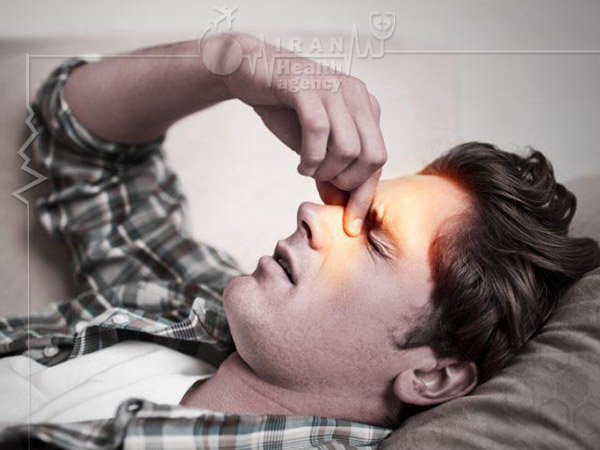Are you wondering how to sleep after rhinoplasty?
Undergoing a rhinoplasty procedure, also known as a nose job, is a major decision that requires dedicated aftercare for proper healing. One of the most important aspects of rhinoplasty recovery is how you sleep at night in the first few weeks following surgery.
After dramatic alterations have been made to reshape or reconstruct the nasal anatomy, swelling and congestion are common temporary side effects. Proper sleeping positions are crucial to allow gravity to reduce swelling as much as possible.
Sleeping upright on your back with extra pillows is crucial for to reduce swelling. Avoid sleeping on your sides or stomach to avoid pressure on healing nasal structures.
Follow your surgeon’s instructions for dressings and sleeping positions, and discuss any issues with them. Rest is important for optimal healing.
Why Is Sleep Important After Rhinoplasty Surgery?
Getting adequate sleep is crucial for recovery after rhinoplasty surgery for several reasons:
- Promotes Healing: Sleep is when the body releases growth hormones that repair tissue and stimulate healing. Quality sleep supports proper healing of the nasal bones, cartilage, skin, and other tissues.
- Reduces Swelling: Swelling is common after rhinoplasty. Sleep helps drain excess fluid and reduces inflammation in the delicate nasal area. Elevating the head while sleeping further minimizes swelling.
- Improves Immune Function: Sleep deprivation compromises the immune system, which can increase the risk of infection. Adequate sleep ensures your body can fight bacteria and contaminants during rhinoplasty recovery.
- Relieves Pain: Discomfort is expected after nose surgery. Sleep helps take the mind off pain and sets the stage for an optimal pain medication schedule. Appropriate rest and avoidance of pain prevent unwanted increases in blood pressure.
- Aids Cartilage Regeneration: The nasal cartilage requires a blood supply for graft integration and regeneration. Quality REM sleep optimizes blood flow for cartilage healing.
- Allows Tissue Revascularization: New blood vessel growth (revascularization) into transplanted grafts and ischemic nasal tissue requires restful sleep periods to develop properly.
You do not want to read this!?
Top 30 rhinoplasty surgeons In the world

Best Sleeping Position After Rhinoplasty
After rhinoplasty, The best position is sleeping on your back with your head on 2-3 pillows. Here are some tips for optimal sleeping post-rhinoplasty:
- Use several pillows to keep your head raised at 30-45 degrees. This helps minimize swelling and discomfort. Avoid lying completely flat.
- Sleep on your back only. Sleeping on your side or stomach can put unwanted pressure on the nose, which can shift bones/grafts.
- When supine, place a soft pillow under your knees to take pressure off your back.
- Keep your lip area free – no mustache dressing or taping. This prevents accidental displacement overnight.
- Take prescribed pain medication before bedtime to manage discomfort through the night.
- Keep the head of your bed slightly elevated if possible for additional swelling reduction.
- To prevent dried blood, use lots of lubricating nasal ointment inside the nostrils before sleeping.
- Avoid too many blankets, which can feel heavy on the nasal area and retain heat/swelling.
- Keep a humidifier running to prevent nasal crusting and dryness as you breathe through your mouth.
- Keep extra pillows on hand if you need to prop up at night.
Follow your surgeon’s instructions for dressing care and activity during recovery. Proper sleep positioning reduces swelling for improved rhinoplasty results.

certain sleeping positions that avoid
- Sleeping on your stomach puts direct pressure on the healing nasal tissues, which can shift bones and graft position. It also obstructs breathing.
- Sleeping on your side: Side sleeping can also put uneven pressure on the nose and push the nasal tip. This should be avoided for at least 1-2 weeks post-op.
- Sleeping flat on your back: Lying completely flat does not elevate the head enough to minimize swelling and congestion. Always use pillows to prop your head up.
- No soft pillows -: Pillows should be firm enough to elevate your head properly. Soft, sinking pillows don’t provide adequate support.
- Forget to take medications: Skipping pain or antibiotic doses can disrupt sleep. Take them on schedule.
- Heavy pillows or blankets: Excess weight on the nose can strain healing tissues. Opt for lightweight covers.
- Changing positions frequently: Try not to move around often. Choose a stable supine position for the whole night.
- Removing dressings: Any splints, casts, or taping should stay on overnight as your surgeon directs.
- Sleeping facedown after anesthesia – Remain on your back while under anesthesia’s effects to prevent smothering.
related: Rhinoplasty in Iran

How should I sleep after rhinoplasty?
Sleep on your back with your head elevated 30-45 degrees on several pillows. This allows for proper drainage and reduces swelling. Do not sleep flat or on your side. Use lubricating ointments and humidifiers to maximize comfort.
Can you sleep on your side after a nose job?
No, you should avoid sleeping on your side for at least 1-2 weeks after rhinoplasty. Side sleeping puts pressure on the nose, which can shift surgical changes to your nasal structures. Back sleeping is best.
How many days should I sleep upright after rhinoplasty?
It’s recommended to sleep with your head elevated for at least 7-14 days after surgery. Keep extra pillows on hand if you need to prop up further at night. Sleeping upright allows gravity to reduce nasal swelling.
How much bed rest after rhinoplasty?
1-2 weeks of primarily resting in bed are typical after rhinoplasty, followed by a gradual increase in light activity. Avoid strenuous activity for 3-4 weeks. Listen to your surgeon’s guidelines on bed rest and restricting movements that could bump the nose.
Another useful article:
Having trouble sleeping after a rhinoplasty procedure?
- Take pain medication before bedtime as prescribed
- Use pillows to prop yourself up
- Sleep in a recliner or propped up in bed
- Use a humidifier and nasal lubricants
- Avoid caffeine and screens before bed
- Listen to calm music and do light reading
Accidentally slept on my side after rhinoplasty:
- Don’t panic; occasional sideways sleeping is likely okay
- Stick to back sleeping as much as possible going forward
- Watch for increased swelling or pain on that side
- Notify the surgeon if you notice asymmetry developing
Can I sleep on my side 2 weeks after rhinoplasty?
- Best to avoid side sleeping for at least 3-4 weeks post-op
- Pressure on the nose can still shift structures this early
- Sleep on your back until the surgeon gives the all clear
How many days should I sleep upright after rhinoplasty?
- Sleep with head elevated for at least 1-2 weeks post-surgery
- Longer if you still have noticeable swelling and congestion
- Transition slowly to lying flatter over the next several weeks
- Follow the surgeon’s guidance on upright sleeping duration
Approved By: Dr Ahmadi



